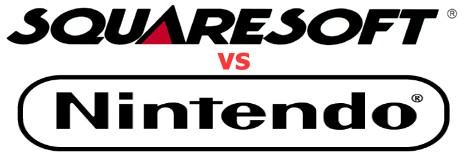![]()
Beta Gameplay of Klonoa 2: Lunatea’s Veil. Shown in TGS 2000 with diffent camera angle perspective and beta stage.
Video:
![]()
Beta Gameplay of Klonoa 2: Lunatea’s Veil. Shown in TGS 2000 with diffent camera angle perspective and beta stage.
Video:
ENG: This entry in the archive doesn’t have a description yet. If you want to add some info about the beta / cancelled stuff that you see in these images, just write a comment or send us an email! We’ll add your info in this page and your name in the contributors list. Thanks a lot for your help! :)
ITA: Questa pagina dell’archivio non ha ancora una descrizione. Se vuoi aggiungere delle informazioni riguardo le differenze della beta o la descrizione di un gioco cancellato, lasciaci un commento o mandaci una email! Inseriremo le tue informazioni nella pagina ed il tuo nome nella lista dei collaboratori. Grazie per il tuo aiuto! :)
Source: www.pixinspace.com
Images:
![]()
Thanks to Serenes Forest we can read about a list of differences that were found in the prototype version of Fire Emblem 7, a beta that was leaked online sometime ago. Major differences are in the colors of the CGs, options, sprites, animations, extra shops and items. The 2 betas can be download at the

According to some 1995 magazines, a new chapter of the Final Fantasy series was already in development for the Nintendo 64 and there were even rumors of a simultaneous release in the U.S. and Japan for the end of the 1996. Was it for real? Not really. In order to test the new Silicon Graphics hardware, Squaresoft created a now well-known interactive CGI demo (not running on the real Nintendo 64 hardware, even if the N64 was powered by Silicon Graphics) with characters from Final Fantasy VI, to show it at the SIGGRAPH 95 expo. That was the “Final Fantasy 64” that magazines talked about, but it was not really a game for any console, just a tech demo. The real Final Fantasy 7 would have been released on the Playstation in 1997. But what happened between Nintendo and Square, and why was there no Final Fantasy for the N64? Read the full article »
![]()
In the website of ATMachine we can read an interesting series of articles about the old Lucas Arts adventures and between them, we can even find a wonderfull page with informations and screens for the beta version of Monkey Island! Various differences like removed puzzles, changes in the text and missing dog closeup are show in those screens.
Robert Seddon has linked us to an interesting article at Grumpy Gamer, in which Ron Gilbert has posted some reminiscences about developing the game:
My brain is filled with a lot of old adventure game puzzles, most of which never made it into a game. DeathSpank actually has a couple of puzzles ideas that we talked about for the original Monkey Island.
Originally, I wanted the Grog Machine to be a Coke Machine, baring that, I wanted it to look like a Coke machine. It originally had the “Coke Wave” on it, but said “Grog”. The Lucasfilm legal team came back and said it was too close to the real trademarked Coke Wave.
The key to the Monkey Head used to be called a Q-Tip(tm), but in my second legal lesson of the project it was changed.
Elaine Marley was just called “The Governor” until the scene in the church was written. Dave Grossman wrote that scene and put in the gag dialog choice where Guybrush shouts “Elaine!”, which is from the movie “The Graduate”. I liked that, so it became her name. In the original design, Elaine was a more ruthless Governor, but she softened up and became a true love interested as the project processed.
There was supposed to be ship combat during your voyage to Monkey Island. It would have been done top-down view with you controlling the ship and firing a cannon. It was right to cut that. Never be afraid to cut.
Also, according to Kotaku, the dog will be in the Monkey Island remake that is going to be released for PC and Xbox 360 Live Arcade.
Spiffy, the dog at the Scumm Bar, showed up on the back of the original box, but had to be cut from the actual game due to space. Now he’s back, though mostly as decoration.
In november 2009, an article on the Workshop blog revealed some unused dialogues that are still hidden in the game’s code:
One thing I quickly noticed was that Ron and Tim had left a lot of notes in the code, explaining why things were the way they were, or putting a date when a certain bug was fixed. This was fascinating to see and read. The other thing I noticed is that when they made some changes, they left the original versions of the code in there, but commented out, so that it wouldn’t be used.
Thanks to Robert Seddon for the contribution!
Images: